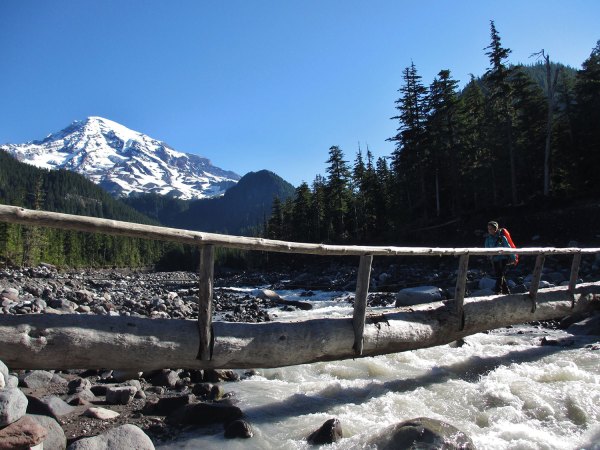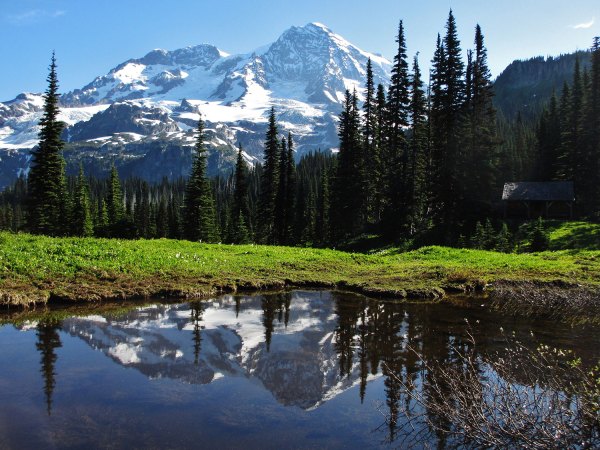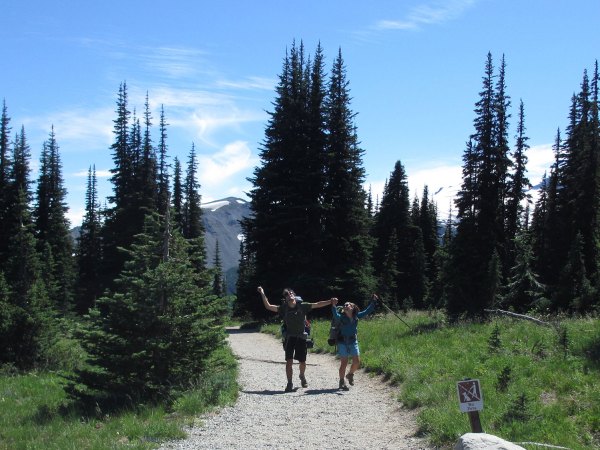Going big with your first backpacking trip can mean a huge payoff. First, make certain to get in hiking shape, stick to a do-able schedule, keep your friends close, keep an eye on your gear—and have a blast.
We arrived at Mount Rainier National Park’s Sunrise Ranger Station (at 6,400 feet in elevation) during a lightning storm, checking in as park personnel set up CB radios amidst downed phone lines. My girlfriend and I noticed a poster of a missing Wonderland Trail hiker from months prior as two oddly calm NPS rangers issued our backcountry permit, securing our campsites for the next eight nights on our loop around Mount Rainier (a tidy 93.2 miles).
As I looked out toward mile one of my first-ever backpacking trip, that reservation sheet felt more like a body ID tag.

Coming from Wisconsin, I’m new to the Cascades region (and elevation changes in general), so hiking Mount Rainier’s Wonderland Trail last July was my true initiation to living here. The trek came about after months of patching together a long list of essentials (tent, pack, sleeping bag, wool and synthetic layers, cookware…), a half-dozen “training hikes” (lugging stone-filled packs up Cascades mountains), navigation and first aid practice, and rallying the support of family and friends to drop us off and deliver supplies. We also decided on our goals: to return to Sunrise alive after thru-hiking the entire trail—ideally, with an intact relationship.
The rains persisted for our first three days of hiking, and there was no sight of the great peak. Leaving as early in the season as was reasonable also meant a lack of companions on the trail; our first passersby after leaving the more peopled and vehicle-accessible trails were baby marmots and a skittish black bear.
Our gear, it turns out, was the crucial factor in being able to actually enjoy, rather than endure, this initial struggle (our routine: wake up, wring out socks, pack up camp, and move to the next site). Wearing a waterproof outer layer, breathable fabric underneath, and sturdy boots and carrying a manageable weight on your back ensures the priceless feeling of having just what you need, when you need it most.
But gear isn’t everything—we also got by with a little help from our friends. Resupply trips from parents and friends meant the occasional pizza and much less pre-planning on our end.
In addition, first-timers should schedule a manageable pace and make room for breaks. Being slightly bored at camp is better than seeing the sun go down when you still have four miles to hike until you put up your tent.

From the moment we saw the Tahoma Glacier pierce through the mists, our enjoyable struggle became bliss. Over the next days we relished the views, new trail friends, shooing bears from our precious food—and diving in nearly iced-over lakes.

No, my girlfriend and I didn’t split, and instead grew closer than ever, having spent our nine days fused in survival and awe. Sometimes this meant word games or obscene riddles, but by and large we hiked silently, loving this new pace of living: stepping along, up and down ridges, noticing the hue of moss on old-growth hemlocks, enjoying the presence of Rainier’s bulky protuberance. There’s nothing like having someone to be silent with for an entire day.
| Day | Start and End | Daily Mileage |
| 1 | Sunrise to Summerland | 10 |
| 2 | Summerland to Nickel Creek | 11 |
| 3 | Nickel Creek to Paradise River | 10 |
| 4 | Paradise River to Devil’s Dream | 9 |
| 5 | Devil’s Dream to Klapatche Park | 10 (+5 for a wrong turn) |
| 6 | Klapatche Park to Golden Lakes | 8 |
| 7 | Golden Lakes to Mowich Lake | 10 |
| 8 | Mowich Lake to Dick Creek | 10 |
| 9 | Dick Creek to Sunrise | 13 |
A backpacking checklist is your tried-and-true guide to packing smart. The list is intentionally comprehensive so you don’t forget anything important.
